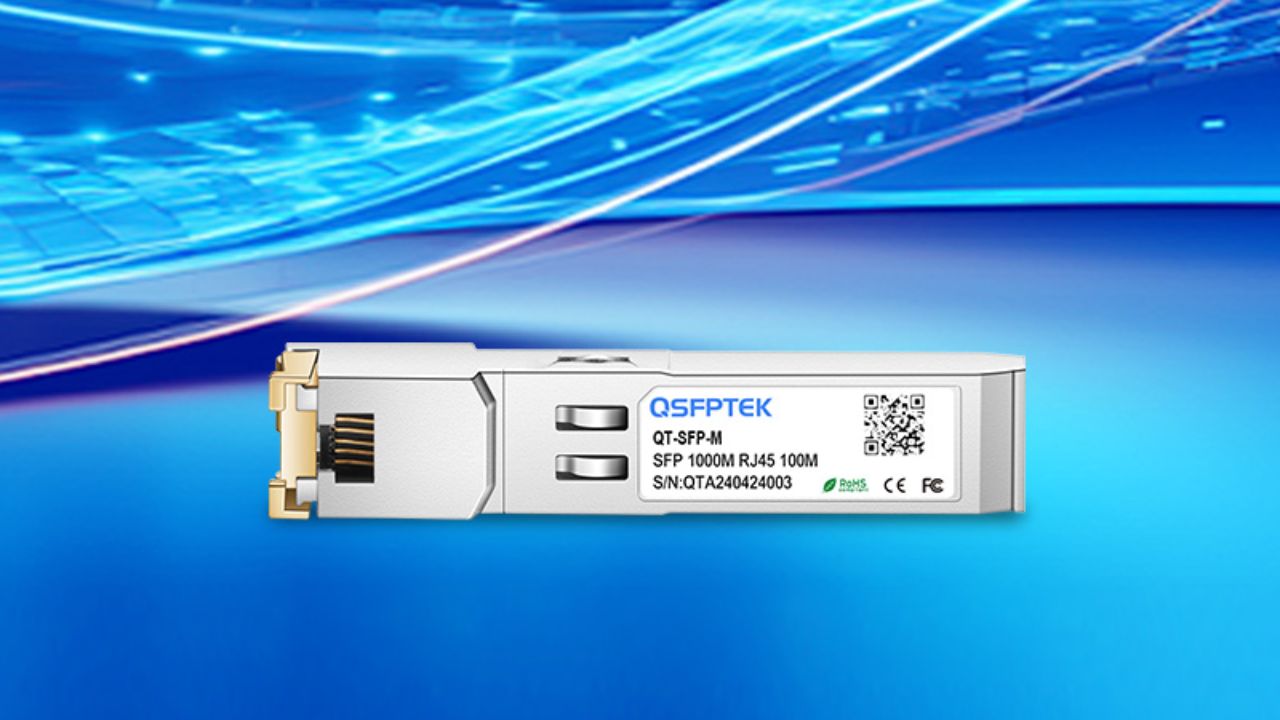As enterprise networks continue to grow in size and complexity, the demand for reliable, cost-effective, and flexible connectivity solutions has never been greater. While fiber optic solutions dominate high-speed and long-distance deployments, copper-based SFP modules remain an important option for many organizations. The 1000BASE-T SFP Transceiver Module provides Gigabit Ethernet connectivity over standard copper cabling, offering a practical, low-cost alternative for short-distance links. This article explores when and why enterprises should consider deploying 1000BASE-T SFP modules, highlighting their role in modern network infrastructure.
Overview of 1000BASE-T SFP Modules
The 1000BASE-T SFP Transceiver Module is designed to deliver 1Gbps data transmission over copper cabling using standard RJ-45 connectors. It supports distances of up to 100 meters on Cat5e, Cat6, or Cat6a cabling, making it ideal for intra-building and short-range interconnects. The module’s compact SFP form factor allows for hot-swappable installation in compatible switches and routers, providing both convenience and flexibility in network deployment. Enterprises can leverage existing copper cabling infrastructure, avoiding the cost and complexity of installing new fiber connections while maintaining reliable Gigabit Ethernet performance.
Key Advantages of 1000BASE-T SFP Modules
One of the primary advantages of 1000BASE-T SFP modules is cost efficiency. Compared with fiber-based transceivers, copper SFPs are significantly less expensive, and they eliminate the need for additional fiber patch panels, transceivers, or optical cables. The modules are also highly convenient to deploy, as they can utilize existing copper infrastructure and require minimal configuration, allowing network administrators to rapidly expand or adjust network capacity. In addition, 1000BASE-T SFPs offer interoperability across a wide range of devices, enabling flexible integration with switches, routers, and other network equipment from multiple vendors. This combination of affordability, ease of deployment, and compatibility makes them a practical choice for many enterprise environments.
When to Use 1000BASE-T SFP in Enterprise Networks
1000BASE-T SFP modules are particularly suitable for short-distance connections where fiber is unnecessary. They are ideal for linking switches across floors in a single building, connecting servers to aggregation switches within a data center, or creating small campus networks. These modules are also well-suited for upgrading legacy networks, allowing organizations to achieve Gigabit Ethernet speeds over existing copper cabling without the need for major infrastructure changes. Moreover, they provide flexibility in temporary or rapidly changing environments, such as pop-up offices, testing labs, or short-term deployments, where quick installation and removal are essential.
Practical Considerations and Limitations
While 1000BASE-T SFP modules offer many advantages, there are some limitations to consider. The maximum transmission distance is restricted to 100 meters, which may be insufficient for larger campuses or longer inter-building connections, necessitating fiber alternatives in those cases. Bandwidth is limited to 1Gbps, which may not meet the requirements of high-traffic servers or next-generation applications. Additionally, copper-based modules can generate slightly more heat and consume more power than fiber counterparts, although the impact is generally minimal in enterprise deployments. Network planners should also verify device compatibility, as certain older switches or routers may require specific SFP firmware versions to operate correctly with these modules.
Case Scenarios and Examples
In practical terms, 1000BASE-T SFP modules are widely used to connect switches within the same office floor or between closely located server racks, providing reliable Gigabit connections without the complexity of fiber. Enterprises can upgrade older Cat5e or Cat6 copper cabling to support 1GbE, enabling high-speed access for desktop clients, IP cameras, and other networked devices. Temporary network setups, such as project-based teams or lab environments, also benefit from the plug-and-play nature of these modules, allowing rapid deployment and reconfiguration without additional infrastructure investment. Across these scenarios, 1000BASE-T SFP modules balance performance, convenience, and cost-effectiveness.
Conclusion
The 1000BASE-T SFP Transceiver Module remains a highly relevant solution for enterprise networks seeking affordable, reliable, and flexible Gigabit Ethernet connectivity. Its ability to leverage existing copper infrastructure, combined with easy deployment and broad compatibility, makes it an ideal choice for short-distance links, legacy network upgrades, and temporary installations. While fiber may dominate long-distance or high-capacity applications, copper SFP modules provide a practical bridge to meet current Gigabit Ethernet requirements efficiently. Enterprises can maximize their investment and maintain network flexibility by strategically deploying 1000BASE-T SFP modules in appropriate scenarios.

